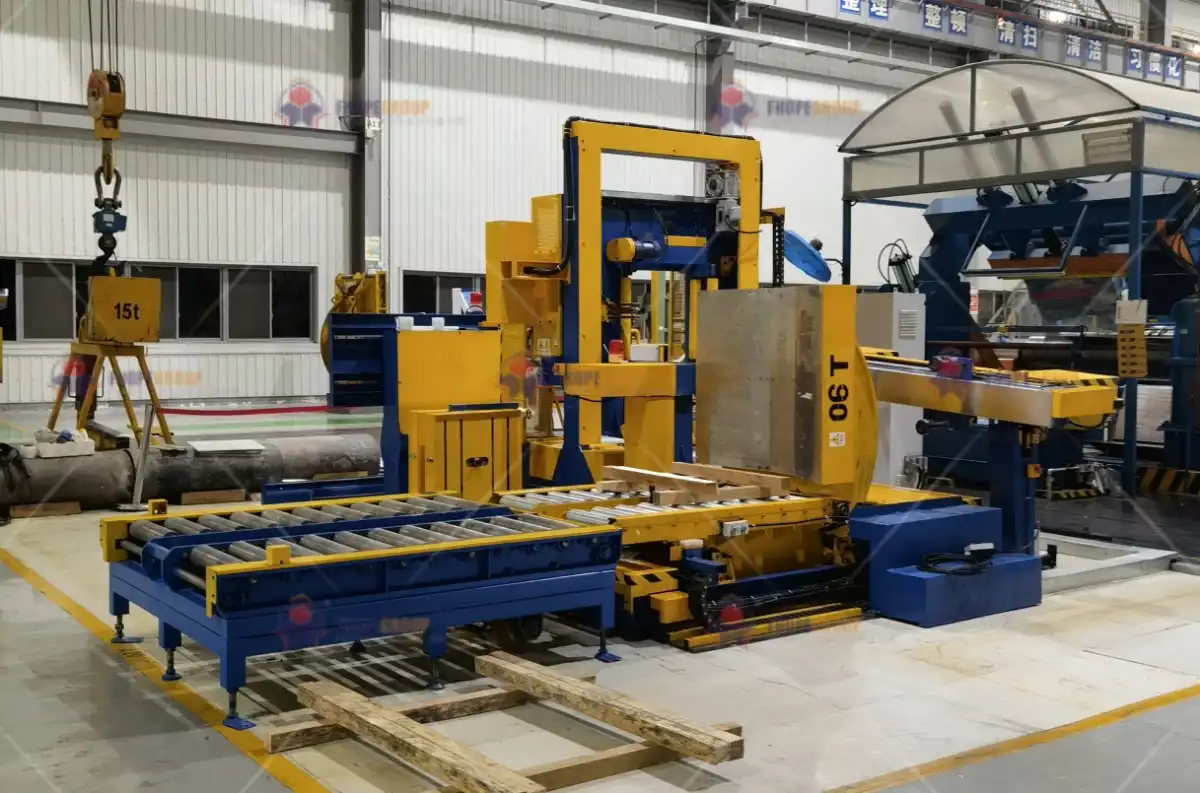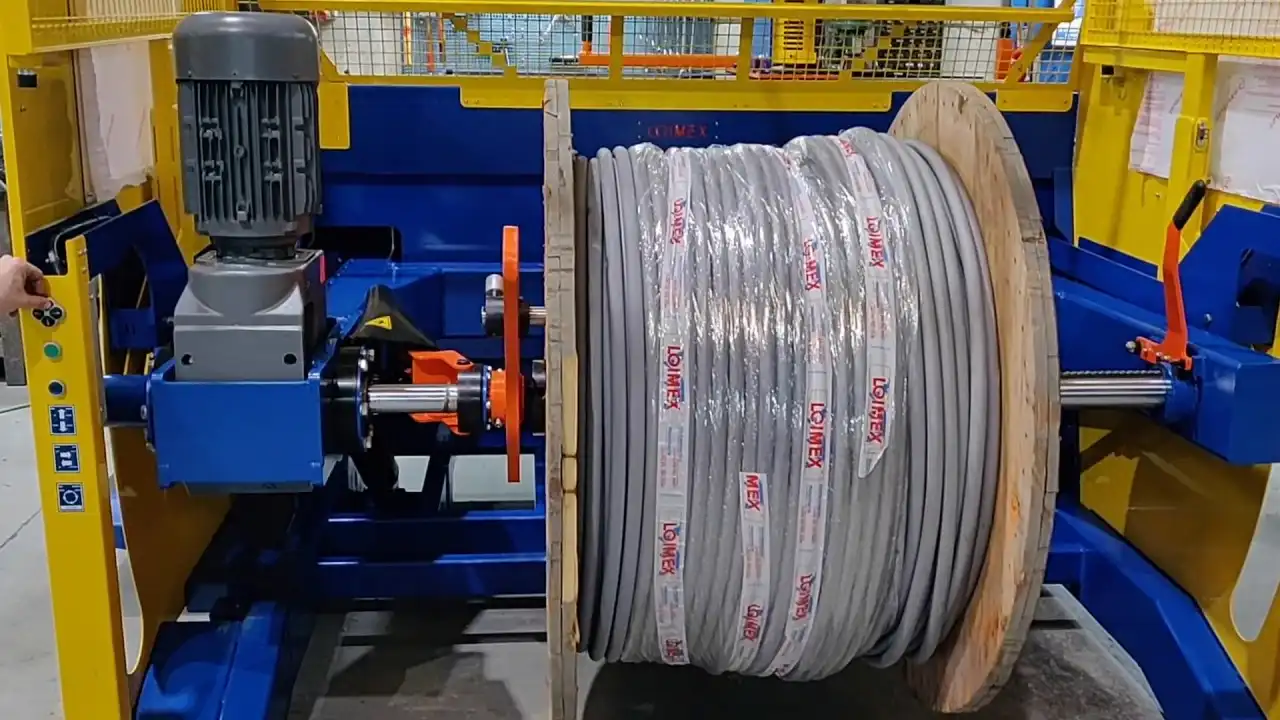How to Prevent Corrosion in Steel Coil Packing Line Components?
Are you facing premature failure and escalating costs due to corrosion in your steel coil packing line? Corrosion can compromise the structural integrity of your equipment and lead to downtime, impacting productivity and profitability. Discover effective strategies to protect your investment and ensure long-term operational efficiency.
To prevent corrosion in steel coil packing line components, implement a comprehensive approach. Regularly inspect and maintain equipment, apply protective coatings, use corrosion-resistant materials, and control environmental factors like humidity. By consistently applying these measures, you can significantly extend the lifespan of your packing line and minimize costly repairs.
Ready to dive deeper and safeguard your steel coil packing line from the relentless assault of corrosion?

Understanding Corrosion Mechanisms in Steel Coil Packing Lines
Do you know what silent killer is lurking within your steel coil packing line? Corrosion isn’t just a surface issue; it’s a deep-seated threat that can undermine the strength and reliability of critical components, leading to unexpected failures and costly replacements.
To combat corrosion effectively, recognize the key mechanisms at play: controlling moisture, reducing chemical exposure, and applying protective barriers. Select corrosion-resistant materials like galvanized steel or aluminum, regularly inspect and maintain components, and utilize Vapor Corrosion Inhibitors (VCIs) within packaging to create a protective environment. By focusing on these areas, you can mitigate the risk of corrosion and keep your packing line running smoothly.
What are the specific factors that contribute to corrosion in a steel coil packing line, and how can you tailor your prevention strategies to address them effectively?

Dive Deeper: Tailoring Corrosion Prevention to Specific Components
A one-size-fits-all approach to corrosion prevention simply won’t cut it in the complex environment of a steel coil packing line. Different components face unique challenges, necessitating tailored strategies to ensure comprehensive protection. Understanding these nuanced needs is crucial for optimizing your maintenance efforts and maximizing the lifespan of your equipment.
Assessing Vulnerability: Identifying High-Risk Areas
The first step in effective corrosion management is pinpointing the most vulnerable areas within your packing line. This requires a systematic assessment of each component, considering its material composition, exposure to corrosive agents, and operational stresses.
- Material Composition: Identify components made from corrosion-prone materials like carbon steel, and prioritize their protection.
- Exposure to Corrosive Agents: Evaluate areas exposed to moisture, chemicals, or extreme temperatures.
- Operational Stresses: Consider components subjected to high stress or abrasion, as these can compromise protective coatings.
Strategic Implementation: Applying Targeted Solutions
Once you’ve identified high-risk areas, you can implement targeted solutions to address their specific needs. This may involve selecting more corrosion-resistant materials, applying specialized coatings, or modifying operational procedures.
- Material Selection: Replace carbon steel components with galvanized steel, stainless steel, or aluminum in critical areas.
- Protective Coatings: Apply specialized coatings like epoxy or polyurethane to create a durable barrier against corrosive elements.
- Operational Modifications: Implement stricter cleaning and maintenance schedules to remove corrosive agents and prevent their accumulation.
Optimizing ROI: Balancing Cost and Effectiveness
While comprehensive corrosion prevention is essential, it’s also important to consider the cost-effectiveness of different strategies. Prioritize solutions that offer the greatest protection for the most vulnerable components, while minimizing unnecessary expenses.
| Component | Corrosion Risk | Recommended Solution | Cost Considerations |
|---|---|---|---|
| Conveyor Rollers | High | Galvanized steel with epoxy coating; regular cleaning and lubrication | Higher initial cost for materials, balanced by reduced maintenance |
| Hydraulic Cylinders | High | Hard chrome plating; synthetic hydraulic fluids | Increased plating cost, offset by extended cylinder lifespan |
| Electrical Enclosures | Medium | Powder coating; sealed enclosures with desiccants | Moderate coating cost, plus cost of desiccants; potential savings on electronics repairs |
| Structural Supports | Low | Standard painting with rust inhibitor; regular inspection and touch-ups | Lower initial cost, but requires ongoing maintenance |
By carefully assessing vulnerabilities, implementing targeted solutions, and optimizing ROI, you can create a robust corrosion prevention strategy that protects your steel coil packing line for years to come.
Selecting Corrosion-Resistant Materials for Longevity
Is your packing line built to last, or is it a ticking time bomb of rust and decay? The materials you choose are the foundation of your defense against corrosion, and selecting the right ones can dramatically extend the lifespan of your equipment and minimize costly downtime.
Choose materials known for their inherent resistance to corrosion, such as stainless steel, galvanized steel, and aluminum. Evaluate the specific environmental conditions your packing line will face and select materials accordingly to ensure optimal protection and longevity.
What are the best material options for different components in a steel coil packing line, and how do they stack up in terms of cost and performance?
From high-strength steels to advanced polymer composites, the options are vast and varied. Each material offers a unique combination of properties, making it essential to carefully consider your specific needs and priorities.
- Steel: Offers high strength and durability but is susceptible to corrosion without proper protection.
- Stainless Steel: Provides excellent corrosion resistance but can be more expensive and may not be suitable for all applications.
- Galvanized Steel: Offers a cost-effective compromise, providing a layer of zinc that sacrifices itself to protect the underlying steel.
- Aluminum: Lightweight and corrosion-resistant, but may not be as strong as steel and can be susceptible to galvanic corrosion in contact with dissimilar metals.
- Polymer Composites: Offer excellent corrosion resistance and weight reduction but may not be suitable for high-stress applications.
By carefully weighing these factors, you can select the ideal materials to ensure the longevity and reliability of your steel coil packing line.
Applying Protective Coatings: A Multi-Layered Defense
Are you relying on a single layer of protection to shield your steel coil packing line from the ravages of corrosion? A multi-layered defense, combining different types of coatings, offers superior protection and ensures that your equipment remains resilient in even the harshest environments.
Implement a comprehensive coating system that includes a base layer for corrosion inhibition, a mid-layer for barrier protection, and a top layer for UV resistance and aesthetic appeal. Regularly inspect and maintain coatings, and promptly repair any damage to prevent corrosion from taking hold.
How can you create a robust coating system that provides comprehensive protection against the diverse threats your steel coil packing line faces?
Layered Approach: Combining Coatings for Enhanced Protection
Base Layer: Corrosion Inhibition
The foundation of any effective coating system is a corrosion-inhibiting primer. These primers contain active ingredients that neutralize corrosive agents and prevent them from reaching the underlying metal. Common options include:
- Zinc-Rich Primers: Offer sacrificial protection, corroding in place of the steel substrate.
- Epoxy Primers: Provide a durable barrier against moisture and chemicals, with excellent adhesion to the metal surface.
- Phosphate Coatings: Create a crystalline layer that improves paint adhesion and inhibits corrosion.
Mid-Layer: Barrier Protection
The mid-layer provides a physical barrier that prevents corrosive elements from reaching the primer and metal substrate. Common options include:
- Epoxy Coatings: Offer superior chemical resistance and durability, forming a tough, impermeable layer.
- Polyurethane Coatings: Provide excellent abrasion resistance and flexibility, making them ideal for high-wear areas.
- Ceramic Coatings: Offer exceptional hardness and heat resistance, protecting against extreme conditions.
Top Layer: UV Resistance and Aesthetics
The top layer protects the underlying coatings from UV degradation and provides the desired aesthetic finish. Common options include:
- Acrylic Coatings: Offer good color retention and weather resistance, maintaining the appearance of the equipment over time.
- Polyurethane Coatings: Provide excellent UV resistance and durability, ensuring long-lasting protection against the elements.
- Fluoropolymer Coatings: Offer exceptional chemical resistance and low friction, making them ideal for specialized applications.
| Coating Layer | Function | Material Options | Benefits | Considerations |
|---|---|---|---|---|
| Base Layer | Corrosion Inhibition | Zinc-rich primer, epoxy primer, phosphate coating | Neutralizes corrosive agents, provides sacrificial protection, improves paint adhesion | Requires careful surface preparation, may need specific topcoats |
| Mid-Layer | Barrier Protection | Epoxy coating, polyurethane coating, ceramic coating | Creates a physical barrier, resists chemicals and abrasion, enhances durability | Can be more expensive, may require specialized application techniques |
| Top Layer | UV Resistance & Aesthetics | Acrylic coating, polyurethane coating, fluoropolymer coating | Protects against UV degradation, provides desired color and finish, enhances aesthetics | May not offer the same level of corrosion protection as other layers |
Implementing Best Practices for Steel Coil Packing Line Component Maintenance
How often are you inspecting your steel coil packing line for signs of corrosion? Proactive maintenance is the key to catching problems early and preventing them from escalating into costly repairs or replacements. By implementing a regular inspection schedule and adhering to best practices for component maintenance, you can extend the lifespan of your equipment and ensure optimal performance.
Establish a routine inspection schedule, focusing on high-risk areas and components. Promptly address any signs of corrosion with appropriate cleaning, repair, or replacement measures. Lubricate moving parts regularly to minimize friction and wear, and ensure proper ventilation to prevent moisture buildup.
What specific maintenance practices can you implement to maximize corrosion resistance and extend the lifespan of your steel coil packing line?
Proactive Maintenance: Key Practices
- Regular Cleaning: Remove corrosive agents and debris from equipment surfaces to prevent their accumulation.
- Prompt Repairs: Address any signs of corrosion immediately with appropriate cleaning, repair, or replacement measures.
- Proper Lubrication: Lubricate moving parts regularly to minimize friction and wear, reducing the risk of coating damage.
- Environmental Control: Ensure proper ventilation to prevent moisture buildup, and consider dehumidifiers in humid environments.
- Material Compatibility: Use compatible cleaning and maintenance products to avoid damaging protective coatings.
By proactively addressing corrosion, and performing constant Corrosion prevention, you can save money, ensure longevity and safety.

